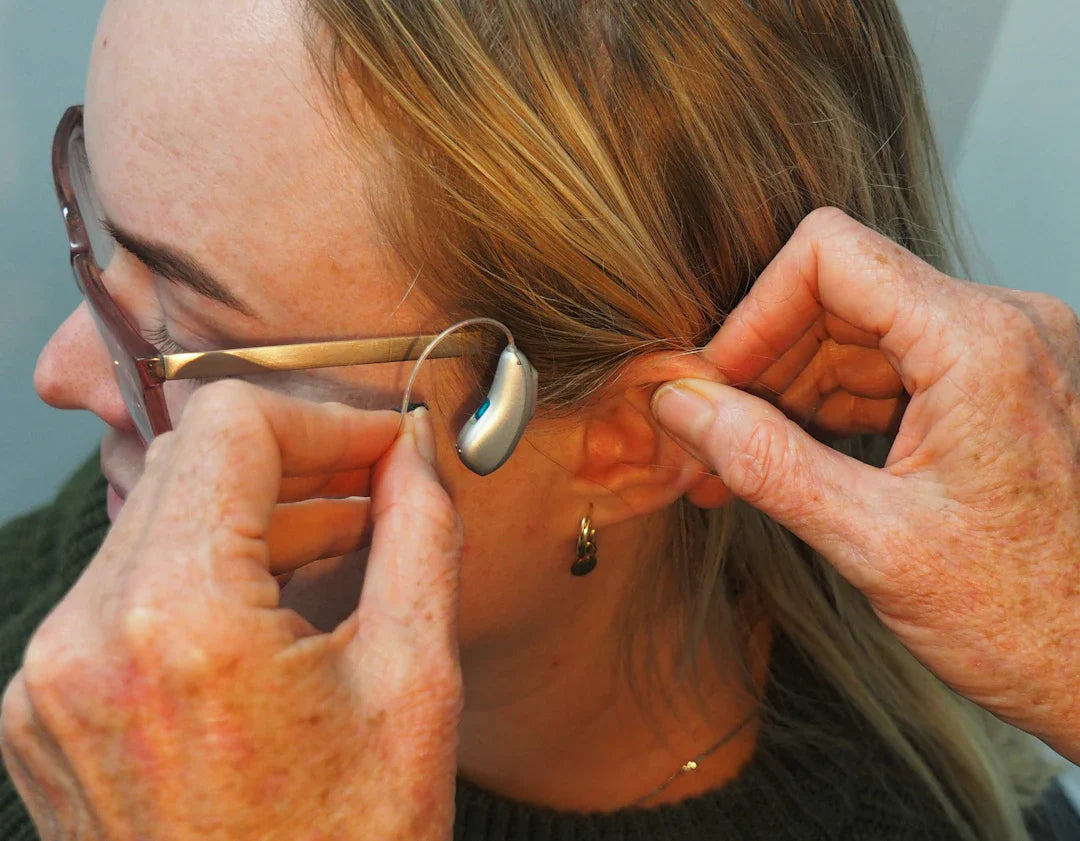The world of hearing aids can seem overwhelming, especially with the wide variety of options available today. Understanding the different types of hearing aids is essential for anyone experiencing hearing loss. This guide will explore the various types of hearing aids, their features, and how they can improve your hearing care. We'll also touch on important topics such as earwax removal and the role of audiology in finding the perfect aid for your needs.
Understanding Hearing Loss
Before diving into the specifics of hearing aids, it is crucial to grasp the concept of hearing loss. Hearing loss can affect anyone, regardless of age, and can be caused by a variety of factors such as genetic predisposition, exposure to loud noises, or age-related changes. It can significantly impact communication, social interaction, and overall quality of life. Thankfully, many solutions are available, with hearing aids being the most common.
The Function of Hearing Aids
Hearing aids are designed to amplify sound, making it easier for you to hear conversations, music, and everyday sounds. They work by picking up sound from the environment, processing it, and then delivering it into the ear. Depending on your needs, they can be customised to suit your specific level of hearing loss.
Types of Hearing Aids
Now that we have a basic understanding of hearing loss, let’s explore the different types of hearing aids available on the market.
1. Behind-the-Ear (BTE) Hearing Aids
BTE hearing aids are one of the most common types used today and are suitable for various ages and levels of hearing loss. They consist of a small case that rests behind your ear, connected to an ear mould that sits inside your ear canal. These aids are well-known for their durability and longer battery life.
2. Receiver-in-the-Ear (RITE) Hearing Aids
Similar to BTE models, RITE hearing aids have a case that sits behind the ear. However, unlike BTE aids, the speaker (or receiver) is located in the ear canal. This provides a more natural sound experience and is less visible than traditional BTE devices. RITE hearing aids are becoming increasingly popular due to their aesthetic appeal and superior sound quality.
3. In-the-Ear (ITE) Hearing Aids
ITE hearing aids are custom-made to fit directly into the ear canal. These devices are larger than some other options, allowing for additional features, such as volume control. ITE aids are particularly beneficial for individuals with mild to severe hearing loss and are less visible than BTE styles.
4. Completely-in-the-Canal (CIC) Hearing Aids
For those seeking a discreet hearing solution, CIC hearing aids are an excellent option. These tiny devices fit completely inside the ear canal, making them almost invisible to others. They are suitable for mild to moderate hearing loss and are often equipped with features such as Widex audio streaming, allowing for seamless connections with smartphones and other audio devices.
5. Bone Anchored Hearing Aids (BAHA)
Bone anchored hearing aids (BAHA) serve a unique purpose. They are surgically implanted and work differently by transmitting sound vibrations through the bone directly to the inner ear. This type of hearing aid is ideal for individuals with conductive hearing loss or those who cannot wear traditional hearing aids due to ear infections or malformations.
Choosing the Right Hearing Aid for You
Choosing the right hearing aid involves consulting with an audiology professional who can assess your hearing and lifestyle needs. Here are some factors to consider when making your choice:
- Level of Hearing Loss: Your audiologist will conduct tests to determine the severity of your hearing loss and recommend suitable devices.
- Lifestyle: Consider how often you will be in noisy environments or require additional features, like audio streaming.
- Comfort and Fit: Ensure the device you choose fits comfortably and suits your cosmetic preferences.
- Budget: Hearing aids come at various price points, so it is essential to find a device that fits your financial situation.
Maintaining Your Hearing Aids
Once you've chosen the right hearing aids, maintaining them is vital to ensure their longevity and optimal performance. Here are a few tips for keeping your device in top condition:
Regular Cleanliness
Regular cleaning is essential to prevent earwax buildup, which can affect sound quality and performance. If you experience issues with earwax, consider earwax removal services as part of your hearing care routine.
Battery Maintenance
Check the batteries regularly and replace them as needed to maintain the hearing aids' performance. Consider rechargeable options if it fits your lifestyle better.
Protect from Moisture
Hearing aids are sensitive to moisture, so it’s essential to keep them dry. Store your devices in a dry place and consider using a dehumidifier for added protection.
Advancements in Hearing Aid Technology
Technology in the hearing aid industry is rapidly evolving. Modern hearing aids now offer features such as Bluetooth connectivity, artificial intelligence, and advanced noise cancellation systems. These advancements not only enhance sound quality but also allow for customised settings based on your personal preferences and surrounding environments.
Smartphone Compatibility
As technology enhances, so do the capabilities of hearing aids. Many modern devices are compatible with smartphones, allowing users to control volume, change settings, and stream audio directly from their devices. Features like Widex audio streaming help improve your listening experience, making conversations clearer and more accessible than ever before.
The Role of Audiology in Hearing Care
The field of audiology plays a crucial role in addressing hearing loss. Audiologists are trained professionals who provide comprehensive assessments and fitting services for hearing aids. They also offer counselling and support for adapting to new hearing devices, guiding patients in using their aids optimally and effectively.
The Importance of Regular Hearing Check-ups
Regular hearing check-ups with a qualified audiologist are essential for monitoring your hearing health. Audiologists help track any changes in hearing and adjust your aids accordingly, ensuring you always have the best hearing care possible. Early intervention in hearing loss can prevent further deterioration, making consistent visits important.
Final Thoughts: Embracing a World of Sound
Understanding the different types of hearing aids available empowers individuals experiencing hearing loss to make informed decisions about their hearing care. Whether you opt for BTE, RITE, ITE, or any other style, remember to consult with an audiologist for tailored advice and support. With proper maintenance and advancements in technology, you can embrace a world of sound, improving your quality of life. Take the first step towards enhanced hearing today, as a vibrant sound-filled life awaits you.




